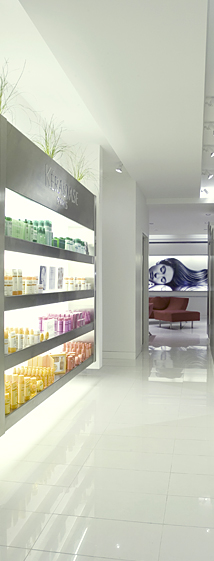New Beauty July 30, 2025
 NewBeauty
NewBeauty
Hair
Make Way for Ginger, the Hottest New Hair Color Trend
Cowboy copper's little sister.
The mid-year lull can leave you longing for a fresh look. Manicures are a quick and temporary boost, but changing your hair color can be much more gratifying. Summer is the season of low-maintenance colors and styles, but this year, ginger has entered the chatroom and is quickly becoming one of the hottest new shades. It’s the warmer version of fellow viral color, cowboy copper, and has enough dimension to transition into fall. That said, it’s no wonder the hue has been adopted by celebrities like Keke Palmer, Nicole Kidman, and, more recently, Jennifer Love Hewitt. There’s a lot ot love about ginger, but opting for such a bold hair color can be a big commitment. Before you head to the salon with your ginger moodboard in hand, we tapped two colorists for the details on this vibrant and fun hair color. Ahead, they share how to find your best shade and their top tips for maintaining it at home.
Featured experts
- Ashley Rose is a San Diego-based color specialist
- Lorena M. Valdes is a colorist at Maxine Salon
Who does ginger hair work for?
Red hair is exceptionally hot right now, but the rise of ginger shows a shift in how red hair is perceived. “We’re in a new era where warmth outweighs richness,” says San Diego-based color specialist Ashley Rose. During the fall, weighty tones like fiery copper and burgundy were popular for their depth. Rose explains that summer’s mood is much lighter, making way for the ginger craze to blossom. “The previous shades of red are transitioning into a natural hue that is soft and gorgeous,” she adds. While ginger is still a bold hue for most people, it feels fresh and unique, especially given how well it works with different skin tones. Strawberry copper shades are usually paired with fair complexions, but the rise in this trend has proven otherwise. According to Rose, those with slightly red undertones or olive and bronzed skin are ideal candidates for ginger hair. However, there is a catch. Colorist Lorena M. Valdes notes that fading can be an issue depending on your natural hair color. With ginger, this means that the hue can become more copper or gold over time.
What to ask for at the salon?
“A consultation to determine which shade of ginger will be the best fit for your complexion,” says Valdes. Undertones play a key role with any hair color, but are especially important with ginger. During your consultation, Rose suggests starting the conversation with a golden copper hue. “People often make the mistake that copper lives in the red family, but copper lives in gold since copper is more orange and lives in yellow, not in red,” she says. While you’re honing in on the right shade, showing your stylist pictures of the color you’re hoping to achieve can be helpful. Make sure you have a few pictures of the exact ginger shade so your stylist can create a blend that’s realistic of your expectations and ideal for your skin tone. Regardless of what you decide, Rose notes the formula should have a copper additive and hints of gold to cancel out the red and achieve ginger.
How to maintain ginger at home
Maintaining the vibrancy of your new color will be tricky. Ginger is a bold and prominent hue that fades quickly, but according to Rose, that’s not necessarily a bad thing. Her advice? Embrace the fade-out phase. “The color is going to look its best when it’s more subtle than glaring and bright,” she says. During this time, the experts suggest washing your hair with warm water, rinsing in cold water and always using a heat protectant when styling with hot tools. “If you’re desperate to refresh the color before getting back to the salon, try using a color-depositing shampoo,” says Rose. She explains that shampoos work best when used once or twice a month because they don’t embed color into the shaft like a color-depositing conditioner does. However, if you prefer to use treatment conditioners, she recommends asking your stylist for a custom concoction. “Before leaving the salon, talk to your stylist about creating a blend you can use at home. Mixing the same semi-permanent color they used with conditioner, using a 1:1 ratio, would be perfect for treatments during your wash routine,” she remarks.
.
